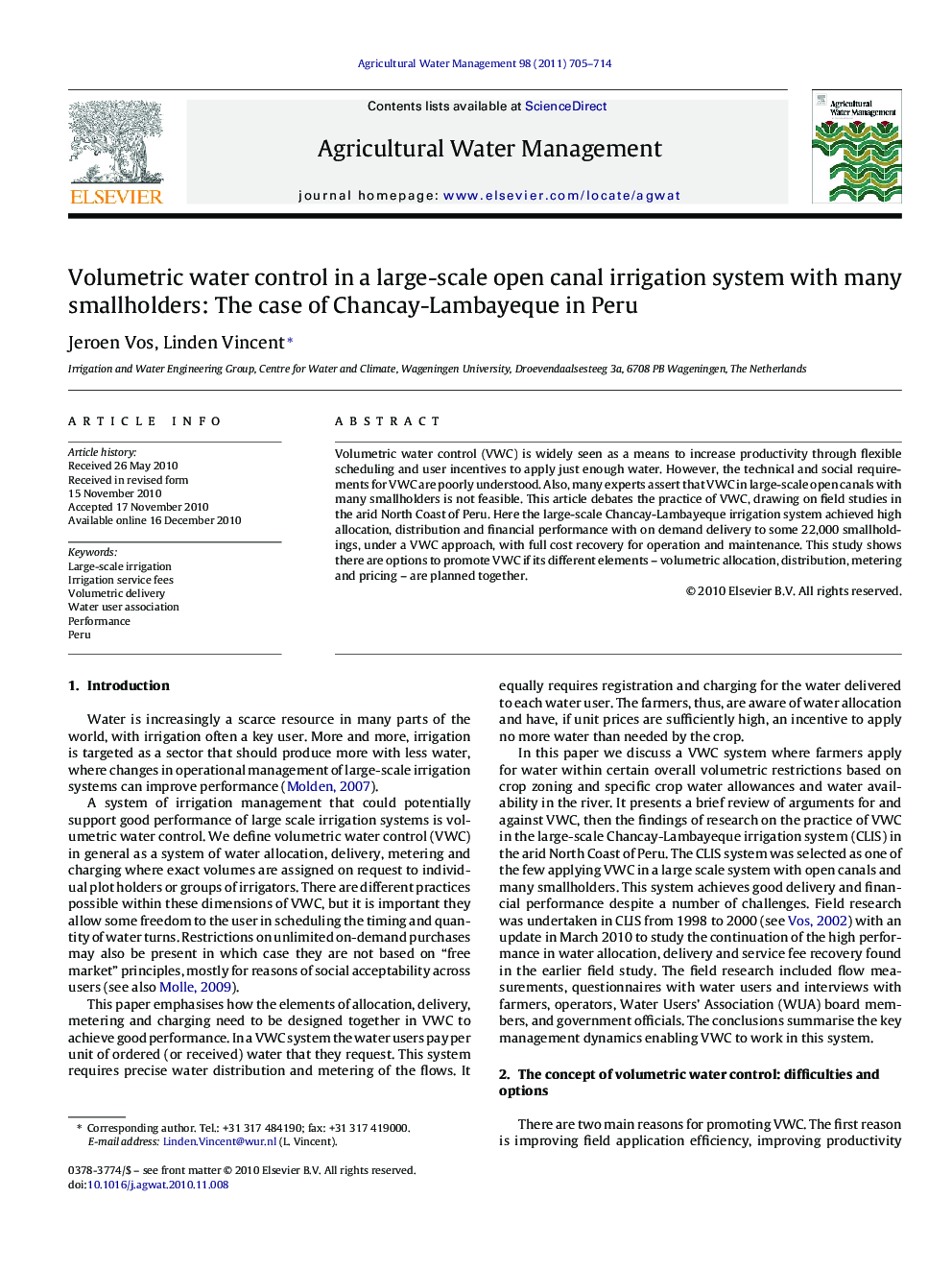| Article ID | Journal | Published Year | Pages | File Type |
|---|---|---|---|---|
| 4479556 | Agricultural Water Management | 2011 | 10 Pages |
Volumetric water control (VWC) is widely seen as a means to increase productivity through flexible scheduling and user incentives to apply just enough water. However, the technical and social requirements for VWC are poorly understood. Also, many experts assert that VWC in large-scale open canals with many smallholders is not feasible. This article debates the practice of VWC, drawing on field studies in the arid North Coast of Peru. Here the large-scale Chancay-Lambayeque irrigation system achieved high allocation, distribution and financial performance with on demand delivery to some 22,000 smallholdings, under a VWC approach, with full cost recovery for operation and maintenance. This study shows there are options to promote VWC if its different elements – volumetric allocation, distribution, metering and pricing – are planned together.
Research highlights▶ Volumetric water control (VWC) is promoted to increase irrigation system performance. ▶ A Peruvian system was studied with many smallholders and manually operated gates. ▶ Accountability supported high allocation, distribution and financial performance. ▶ Irrigated area increased 10% under VWC management for the same supply. ▶ Volumetric allocation, distribution, metering and pricing were planned together.
